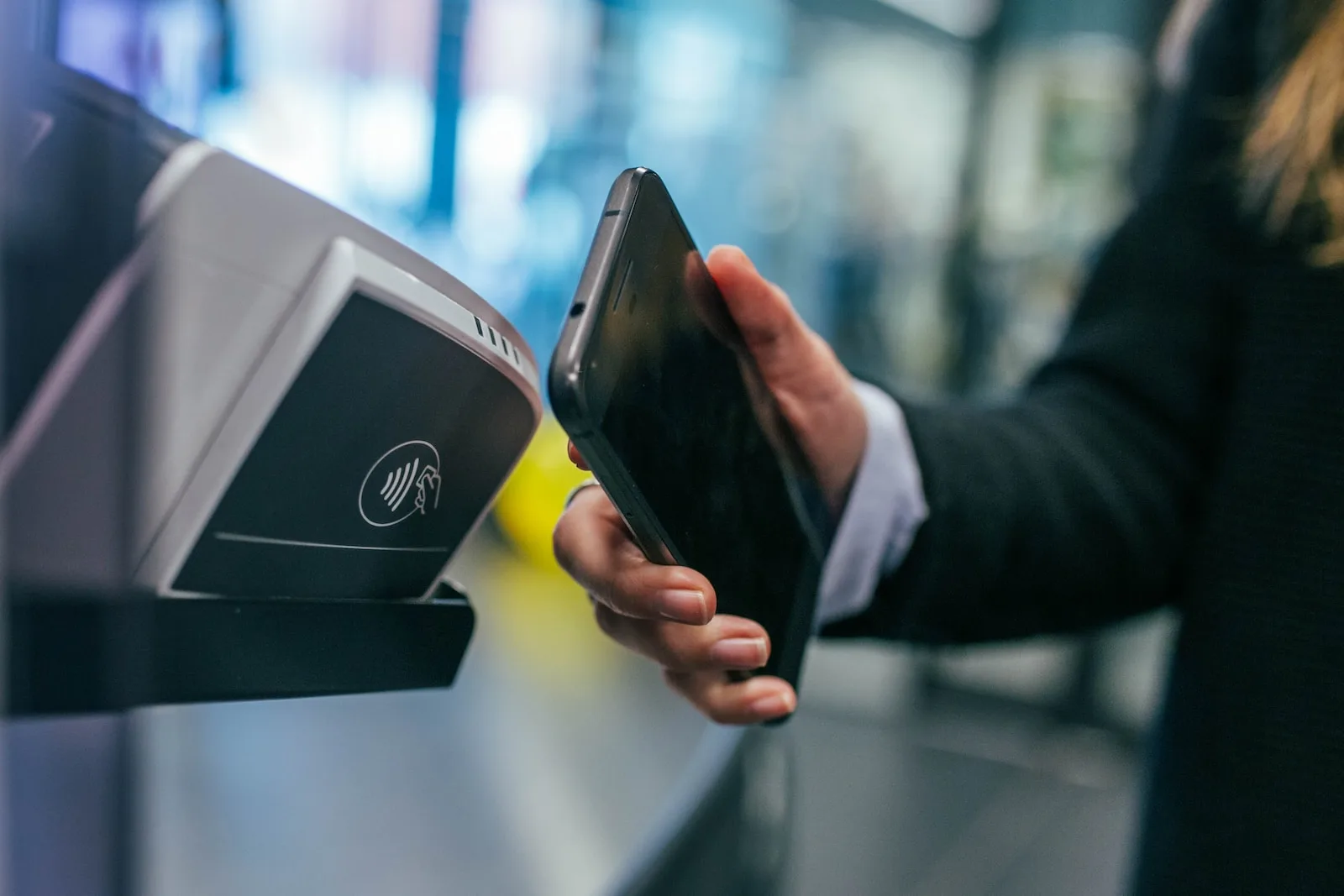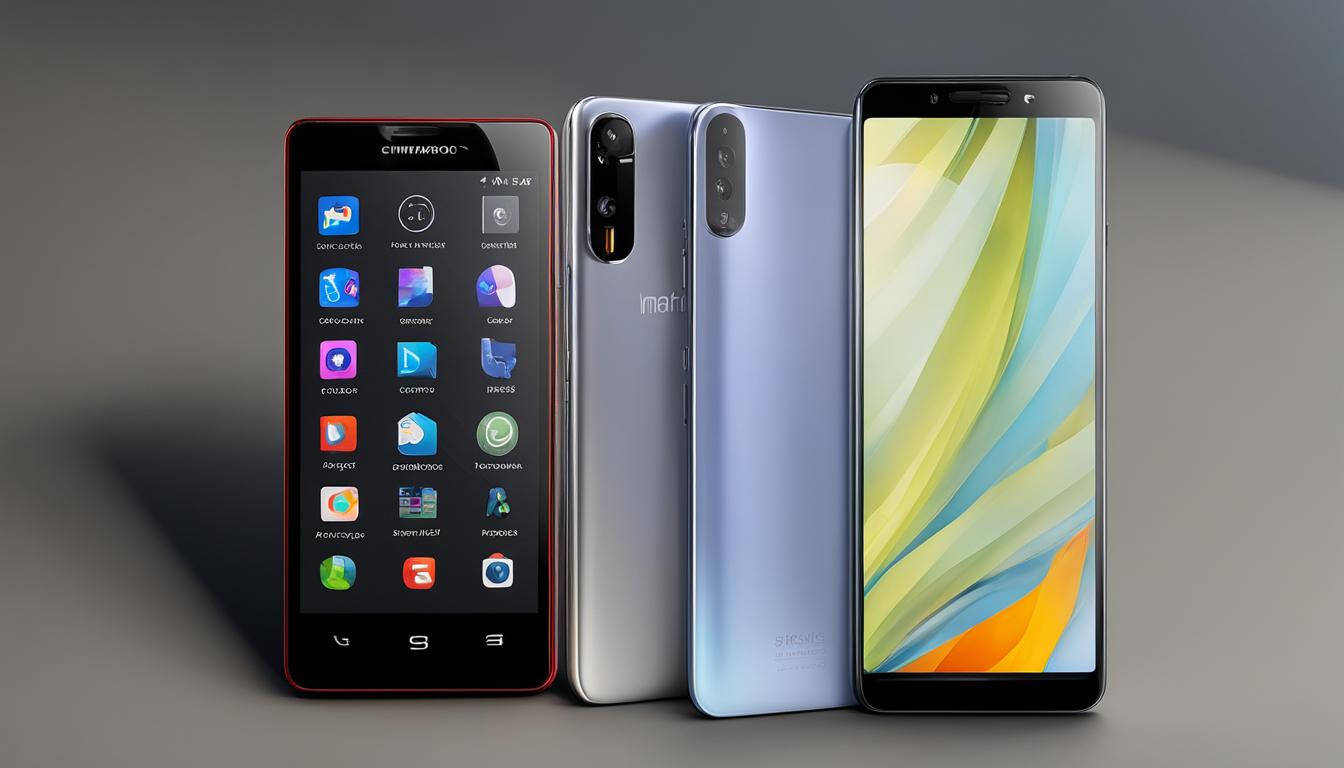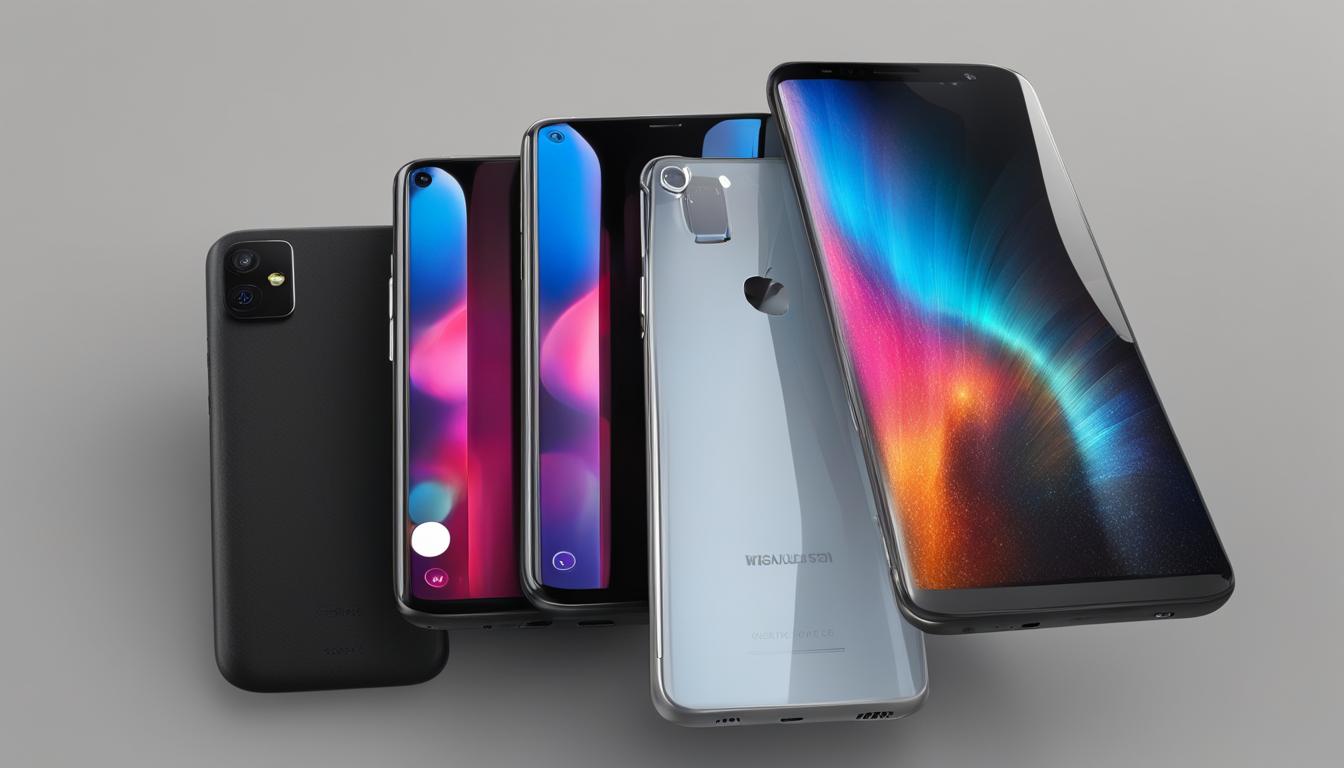Introduction
Mobile technology has rapidly emerged as an integral part of our daily lives, revolutionizing our communication, entertainment, and even financial transactions. With the ever-evolving advancements in this field, it becomes imperative to explore and understand the various technologies that power our mobile devices.
Two such technologies that have gained considerable prominence are Near Field Communication (NFC) and Radio Frequency Identification (RFID). In this article, we will delve into the differences between NFC and RFID in the realm of mobile technology.
Brief Overview of Mobile Technology
Mobile technology encompasses a wide range of portable electronic devices that enable wireless communication and computing on-the-go. These devices include smartphones, tablets, smartwatches, and other wearable gadgets. Over the past decade, mobile technology has witnessed unprecedented growth due to its ability to provide instant connectivity and access to information.
Smartphones have become a ubiquitous tool for individuals worldwide as they offer much more than just voice communication. These pocket-sized powerhouses incorporate advanced features such as high-resolution displays, powerful processors, internet connectivity via cellular or Wi-Fi networks, GPS navigation systems, cameras with impressive imaging capabilities, and a plethora of applications designed for various purposes.
In addition to smartphones’ multifunctionality, mobile apps have revolutionized numerous industries by offering convenience at users’ fingertips. From banking services and e-commerce platforms to fitness trackers and augmented reality gaming experiences – there seems to be an app for almost every need imaginable.
Importance of Near Field Communication (NFC) and Radio Frequency Identification (RFID)
Near Field Communication (NFC) and Radio Frequency Identification (RFID), although distinct technologies in their own right, share common ground in enabling seamless wireless interactions between devices. Both NFC and RFID play pivotal roles across industries by facilitating contactless data transmission. The significance of NFC lies in its ability to establish short-range wireless communication between two NFC-enabled devices or between an NFC device and passive NFC tags.
This technology has heralded a new era of contactless payments, allowing users to make transactions securely and conveniently using their smartphones or other NFC-enabled devices. With the rise of mobile payment platforms like Apple Pay, Google Wallet, and Samsung Pay, NFC has become an integral component of our daily financial transactions.
On the other hand, RFID empowers businesses with efficient inventory management and tracking capabilities. By employing radio waves for wireless identification purposes, RFID technology enables real-time tracking of assets across various industries.
Retail giants utilize RFID tags to streamline supply chains while ensuring accurate inventory levels. Additionally, RFID tags find applications in smart transportation systems for electronic toll collection or as identification tags for livestock and pets.
Understanding NFC and RFID
Definition and basic principles of NFC:
Near Field Communication (NFC) is a proximity-based communication technology that enables contactless data transmission between devices. It operates at a short range, typically a few centimeters, allowing devices to establish a connection simply by being in close proximity to each other.
NFC relies on electromagnetic induction to facilitate communication between devices, utilizing inductive coupling between the sender and receiver antennas. NFC technology employs two modes of operation: active and passive.
In active mode, both devices generate their own electromagnetic field to establish communication. On the other hand, passive mode involves one device generating an electromagnetic field while the other device uses this field for communication.
Definition and basic principles of RFID:
Radio Frequency Identification (RFID) is a wireless identification technology that utilizes radio waves for data transfer. Unlike NFC, which operates at a short range, RFID can operate at varying ranges depending on the frequency used.
There are three primary frequency bands in RFID: low-frequency (LF), high-frequency (HF), and ultra-high-frequency (UHF). In LF RFID systems, which operate at frequencies up to 125-134 kHz, the range typically reaches up to 10 centimeters.
This frequency band is commonly used for access control systems or applications involving proximity cards. HF RFID systems operate around 13.56 MHz and offer an extended range compared to LF solutions, reaching approximately one meter.
HF RFID is widely adopted in applications such as contactless payment systems or smart cards. UHF RFID operates within the ultra-high-frequency band (860-960 MHz), providing a significantly larger read range of several meters or even greater distances under certain conditions.
UHF technology finds extensive use in inventory management, logistics, or tracking applications that require the identification of multiple items simultaneously. By understanding the fundamental principles and ranges of NFC and RFID technologies, we can delve deeper into their functionality and explore their unique characteristics in mobile technology.
Functionality and Applications
NFC functionality in mobile devices
NFC brings a myriad of functionalities to mobile devices, revolutionizing how we interact with technology. One of its primary functions is facilitating seamless data exchange between two NFC-enabled devices.
By simply bringing two compatible devices into close proximity, NFC allows users to transfer information instantly. This feature proves particularly useful for sharing contacts, photos, and files effortlessly between smartphones or tablets without the need for cumbersome cables or complex setup procedures.
Moreover, NFC has become synonymous with contactless payment systems like Apple Pay and Google Wallet. With the tap of a phone or wearable device on an NFC-enabled payment terminal, users can make secure transactions using their stored credit card information.
This convenient and secure method of payment eliminates the need to carry physical wallets or cards, making it increasingly popular among tech-savvy consumers. Additionally, NFC plays a vital role in access control systems for buildings or vehicles.
Gone are the days of fumbling for keys or swiping access cards; instead, individuals can use their smartphones as digital keys by simply tapping them against an NFC reader. This application provides enhanced convenience and security while streamlining access management processes.
RFID functionality in mobile devices
The functionality offered by RFID technology within mobile devices is equally impressive. One key area where RFID excels is asset tracking and inventory management in industries such as retail and logistics. By attaching RFID tags to items or pallets, businesses can efficiently track their inventory throughout the supply chain process using RFID readers strategically placed at various checkpoints.
This real-time visibility enables companies to monitor stock levels accurately, reduce losses due to theft or misplacement, optimize storage facilities, and streamline operations overall. Furthermore, RFID’s capabilities extend beyond tracking products; they can also be used for identification purposes across diverse domains.
For instance, identifying tags containing unique information can be attached to livestock, pets, or even humans. In the case of livestock, RFID tags enable farmers to monitor animal health data, track movements, and streamline breeding management.
Similarly, in the medical field, RFID tags can be utilized for patient identification and access to medical records, reducing errors and enhancing overall healthcare efficiency. Smart transportation systems like electronic toll collection leverage RFID technology in mobile devices.
By integrating RFID chips into smartphones or vehicle-mounted transponders, toll booths can seamlessly process payments without requiring drivers to stop or manually pay with cash. This not only enhances traffic flow but also reduces congestion and travel time for commuters.
The combination of RFID technology with mobile devices revolutionizes transportation infrastructure while providing a convenient experience for motorists on the move. NFC and RFID offer distinct functionalities within mobile devices that have transformed diverse industries and consumer experiences.
While NFC focuses on facilitating data exchange between devices and enabling contactless payment systems and access control solutions; RFID excels in asset tracking within retail and logistics industries, identification across various domains like livestock management or patient identification in healthcare settings as well as enhancing smart transportation systems through electronic toll collection mechanisms. By understanding these differences in functionality, individuals can harness the full potential of these technologies in their everyday lives while embracing a more seamless digital future.
Technical Differences Between NFC and RFID
A. Operating Frequency Range
When it comes to the operating frequency range, NFC and RFID diverge significantly. NFC primarily operates at the high-frequency (HF) band of 13.56 MHz, which offers a balance between data transmission speed and range. On the other hand, RFID technology can operate in three different frequency bands: low-frequency (LF), high-frequency (HF), and ultra-high-frequency (UHF). LF RFID operates at frequencies below 135 kHz, providing a short-range capability of up to 10 centimeters. HF RFID extends the range up to one meter while using frequencies similar to NFC, making it suitable for applications that require slightly longer distances. UHF RFID technology is capable of reaching several meters in range but operates at higher frequencies around 860-960 MHz. The versatility of RFID’s frequency options allows it to cater to a wide range of applications with varying requirements. While NFC is limited to HF, this restriction is intentional as it focuses on close-range interactions such as contactless payments or data exchange between devices held near each other.
B. Data Transfer Rate
Another crucial difference between NFC and RFID lies in their respective data transfer rates. NFC typically has slower data transfer rates compared to some advanced versions of RFID technologies. In NFC communication, the maximum data transfer rate reaches up to 424 kbps (kilobits per second). Although this might seem relatively slow when compared to Wi-Fi or Bluetooth standards, it suffices for most common use cases like transferring small files or initiating secure transactions. On the contrary, certain types of advanced UHF RFID technologies can achieve much higher data transfer rates of several megabits per second (Mbps) depending on specific implementations and hardware capabilities. This enhanced speed enables rapid inventory scanning or real-time tracking systems in supply chain management scenarios where large amounts of data need to be processed swiftly. It is vital to note that the data transfer rate is not the sole determining factor in choosing between NFC and RFID technologies; other considerations such as communication range and power requirements also play significant roles.
C. Power Requirements
Power requirements represent another area where NFC and RFID differ. NFC technology is designed to operate using power supplied by electromagnetic induction from a passive reader device, making it an example of a passive wireless communication technology. This means that when an NFC-enabled device comes within range of a powered reader, it can interact without needing an internal power source, relying solely on the energy provided by the reader. In contrast, RFID devices can be classified into two main categories: passive and active systems. Passive RFID tags do not require any internal power source; instead, they draw energy from the electromagnetic fields generated by the reader during communication. Active RFID systems, however, are equipped with their own internal power source (usually a battery), allowing them to operate independently and provide stronger signal transmission capabilities over longer distances. The choice between NFC and RFID depends on various factors such as application requirements, desired operating range, data transfer speed needs, and power constraints. Understanding these technical differences empowers individuals and organizations alike to make informed decisions when implementing mobile technologies.
Conclusion
While both NFC and RFID are wireless communication technologies used in mobile applications, they exhibit distinct technical differences that determine their usage in various scenarios. The operating frequency range sets them apart significantly—NFC operates primarily at HF (13 .56 MHz), while RFID encompasses LF (up to 135 kHz), HF (up to 1 meter), or UHF (several meters) frequencies.
Moreover, NFC generally offers slower data transfer rates compared to certain advanced versions of RFID technology that can achieve higher speeds in megabits per second. Furthermore, their power requirements differ greatly: NFC is a passive technology that draws energy from the reader, while RFID encompasses both passive and active systems, with some tags housing their own power sources.
By understanding these differences, individuals and businesses can make informed decisions when selecting the appropriate technology for their specific needs. Ultimately, NFC and RFID technologies contribute to the seamless integration of mobile devices in our lives, unlocking countless possibilities for convenient and secure interactions.
 Skip to main content
Skip to main content


